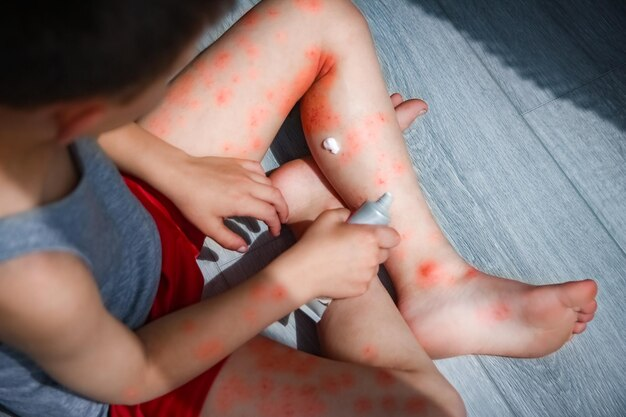Causes and Contributors to Children’s Fungal Infections
Children’s fungal infections often thrive in warm and moist environments. Humid climates can encourage fungi to grow, leading to infections. Poor hygiene can contribute significantly. Regular washing and drying can decrease risks, especially for those in crowded places like daycares.
Certain health aspects can also play a role. A child with a weak immune system is more likely to catch a fungal infection. Additionally, shared living spaces, typical in Indian households, can increase exposure to such infections. Understanding these causes can help caregivers take preventive measures.
Identifying Common Fungal Infections in Children
Children’s fungal infections vary, but common ones include infant ringworm and thrush diaper rash. Infant ringworm appears as a red, circular rash, often affecting the scalp, while thrush diaper rash causes red patches in the diaper area.
These infections occur in specific age groups. Infant ringworm typically affects babies and toddlers, often due to playing on floors. Thrush diaper rash mainly targets infants, especially those in diapers too long, due to moisture and warmth.
Parents can identify these by observing symptoms. Look for redness, itchiness, or unusual skin rashes. Visual guides online can assist in distinguishing these conditions from others like eczema. Such awareness can guide better parental responses.
Recognizing Symptoms of Children’s Fungal Infections
Symptoms can vary, but common signs include: – Red or white patches on the skin – Itchiness or irritation – Rings or spots on the skin
These signs can resemble other skin conditions, so accurate identification is crucial. Distinctive marks like rings often indicate a fungal issue, helping parents seek the right treatment.
Available Treatment Options for Children’s Fungal Infections
For treating children’s fungal infections, over-the-counter creams work well for mild cases. These creams can relieve itching and clear up minor infections.
However, there are times when stronger medicine is needed. If over-the-counter solutions don’t work, or if symptoms worsen, prescription medication becomes necessary. Consulting a pediatrician ensures children get appropriate treatment, tailored to their specific needs, making professional advice crucial for persistent infections.
Preventive Measures and Hygiene Practices in Schools and Homes
To prevent children’s fungal infections, daily hygiene is essential. Here are some ways: – Bathing regularly and drying thoroughly – Washing hands often, especially before meals – Keeping living areas clean and dry
Schools can also help by promoting regular cleaning of shared spaces. Encourage children to wear sandals in communal showers or pools. These practices at home and school protect children from infections, promoting a healthier environment.
Boosting Immunity Through Diet and Nutrition
A healthy diet strengthens children’s defenses against infections. Include fruits and vegetables, rich in vitamins, in their meals. Foods like yogurt can also be beneficial, as they support gut health, indirectly boosting immunity.
Parents should focus on balanced diets for their kids. Adequate nourishment builds a robust immune system, reducing infection risks.
Dispelling Myths and Misconceptions
There are myths about children’s fungal infections. Some believe these infections spread through touch alone. While touching can spread fungi, they also thrive in shared environments.
It’s important to rely on facts, not myths, to help protect children effectively. Trust healthcare professionals or reputable sources for accurate advice on fungal infections.
Exploring Natural Remedies and Alternative Therapies
For some, home remedies can offer comfort alongside medical treatments. Ingredients like coconut oil have antifungal properties and can soothe affected skin.
Some parents explore Ayurvedic treatments. However, while traditional remedies can support wellness, ensure they’re safe and consult healthcare providers before trying alternative therapies. Avoid unsanctioned treatments lacking scientific backing.
Addressing the Psychological and Social Effects on Children
Fungal infections can affect children’s self-esteem. Visible infections might cause embarrassment or peer teasing.
Parents can support by reassuring their children. Educating peers on common infections can reduce stigmatization. Emotional support is vital, fostering a secure, understanding environment.
Community Health Initiatives in India against Children’s Fungal Infections
In India, community efforts lead to better children’s fungal infection awareness. Programs by NGOs and government focus on education, highlighting prevention and early detection.
Schools play a key role, spreading infection awareness among children. By integrating health education into curricula, children learn essential hygiene practices, safeguarding against infections.
Conclusion
Understanding and managing children’s fungal infections is vital for staying healthy. By recognizing signs early and using proper treatments, parents can effectively combat these infections. Engaging with community resources, maintaining hygiene, and supporting children’s emotional needs are crucial steps toward preventing these infections.

